Vision Intelligence and Data Lab
Research projects
Agricultural image semantic segmentation is a pivotal component of modern agriculture, facilitating accurate visual data analysis to improve crop management, optimize resource utilization, and boost overall productivity. This study proposes an efficient image segmentation method for precision agriculture, focusing on accurately delineating farmland anomalies to support informed decision-making and proactive interventions. A novel Dual Atrous Separable Convolution (DAS-Conv) module is integrated within the DeepLabV3-based segmentation framework. The DAS-Conv module is meticulously designed to achieve an optimal balance between dilation rates and padding size, thereby enhancing model performance without compromising efficiency. The study also incorporates a strategic skip connection from an optimal stage in the encoder to the decoder to bolster the model’s capacity to capture fine-grained spatial features. Despite its lower computational complexity, the proposed model outperforms its baseline and achieves performance comparable to highly complex transformer-based state-of-the-art (SOTA) models on the Agriculture-Vision benchmark dataset. It achieves more than 66% improvement in efficiency when considering the trade-off between model complexity and performance, compared to the SOTA model. |
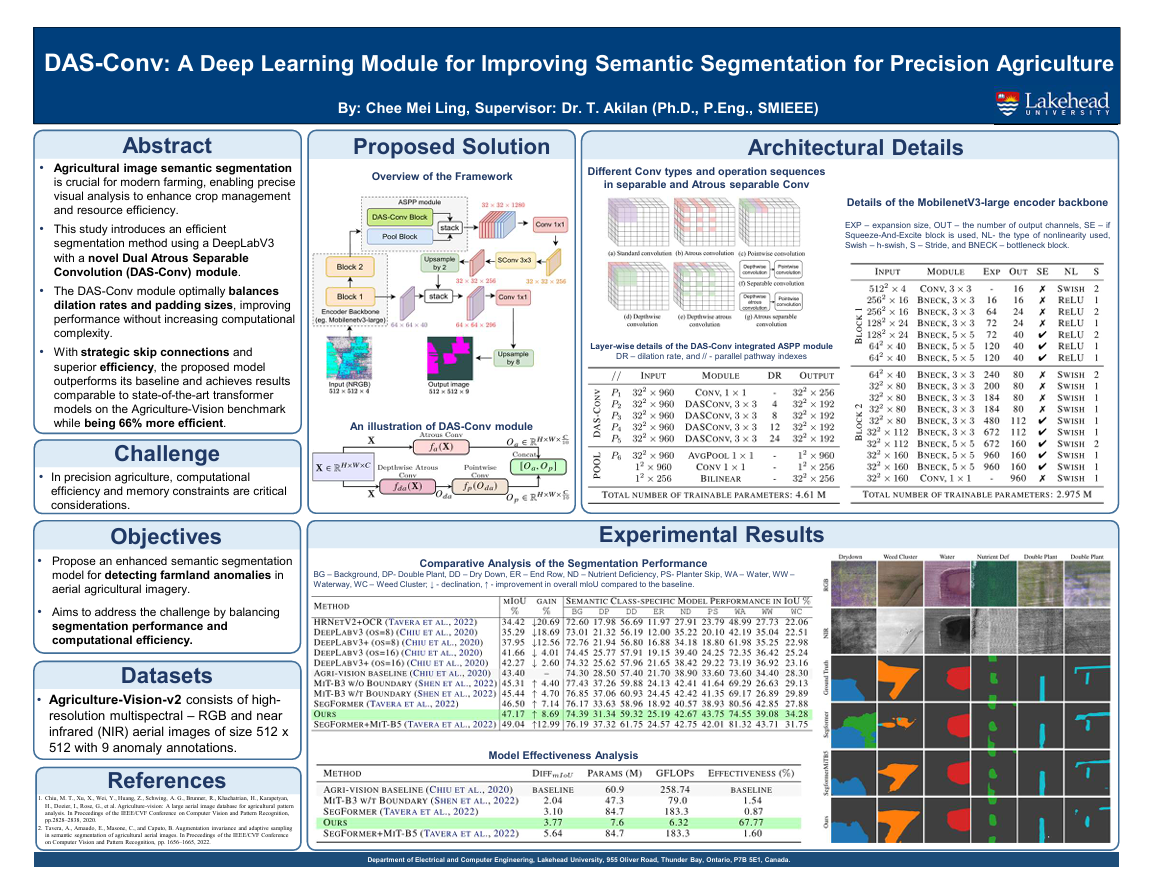 |
Fake news is a major issue in today's world, and detecting it is a crucial yet difficult task. Identifying fake news is a high priority for NLP, and the goal of automatic fake news detection is to reduce the time and effort required by individuals to identify and remove misleading news. This study proposes the hybrid model, which is a combination of supervised (SVM, Random Forest, etc.) and unsupervised (K Means clustering) learning models. This study also shows how CNN can be used to improve performance, and the model performs better on bullying vs non-bullying problems as well. [Link] |
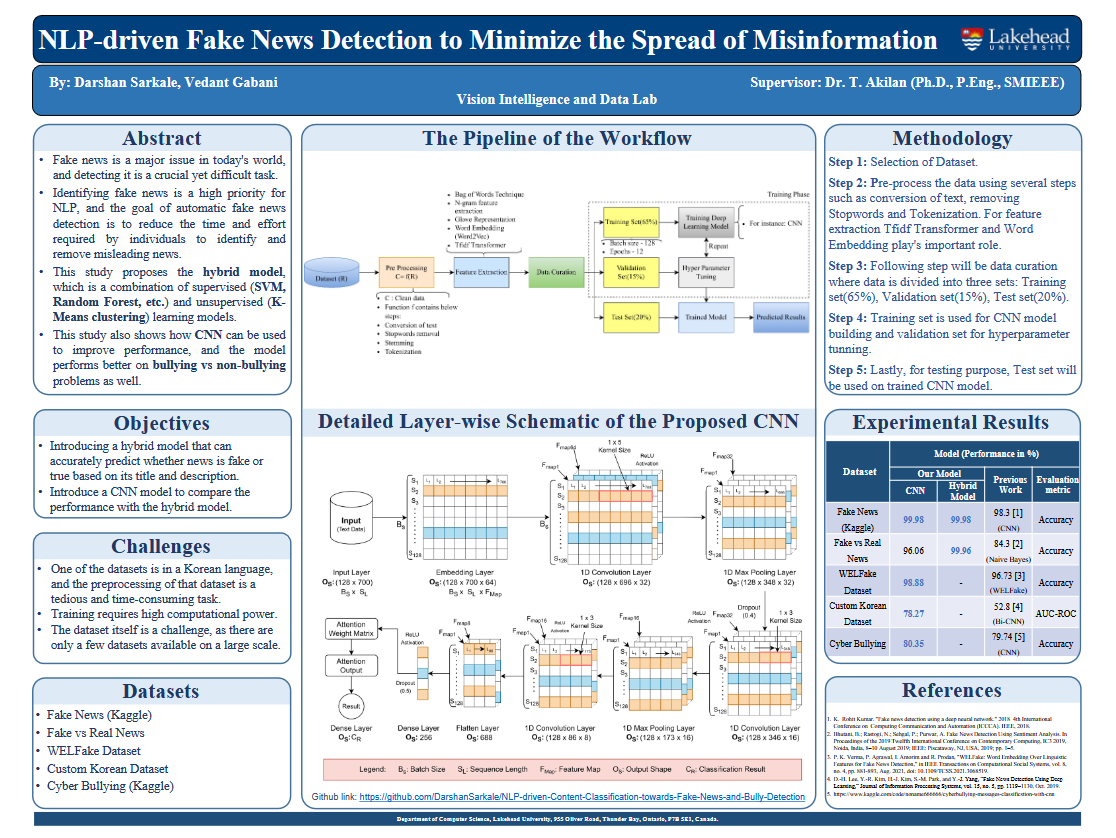 |
Image segmentation is vital for numerous applications, including autonomous driving, agriculture, and medical imaging. A lightweight model is proposed, integrating attention mechanisms and self-gated activation to enhance pavement crack segmentation. The model outperforms existing solutions, achieving a 1.85% improvement in mean intersection over union (mIoU). The model demonstrates efficient per-sample inference time (237ms), making it suitable for real-time applications. This study aims an optimized architecture with an attention block and self-gated activation to improve pavement crack segmentation performance. It conducts extensive experiments on two benchmark datasets and systematically compares the proposed model with recent pavement detection methods. Inconsistent lighting conditions on pavements can lead to varying contrast levels, affecting the accuracy of crack detection. The model needs to handle large-scale pavement areas. [Link] |
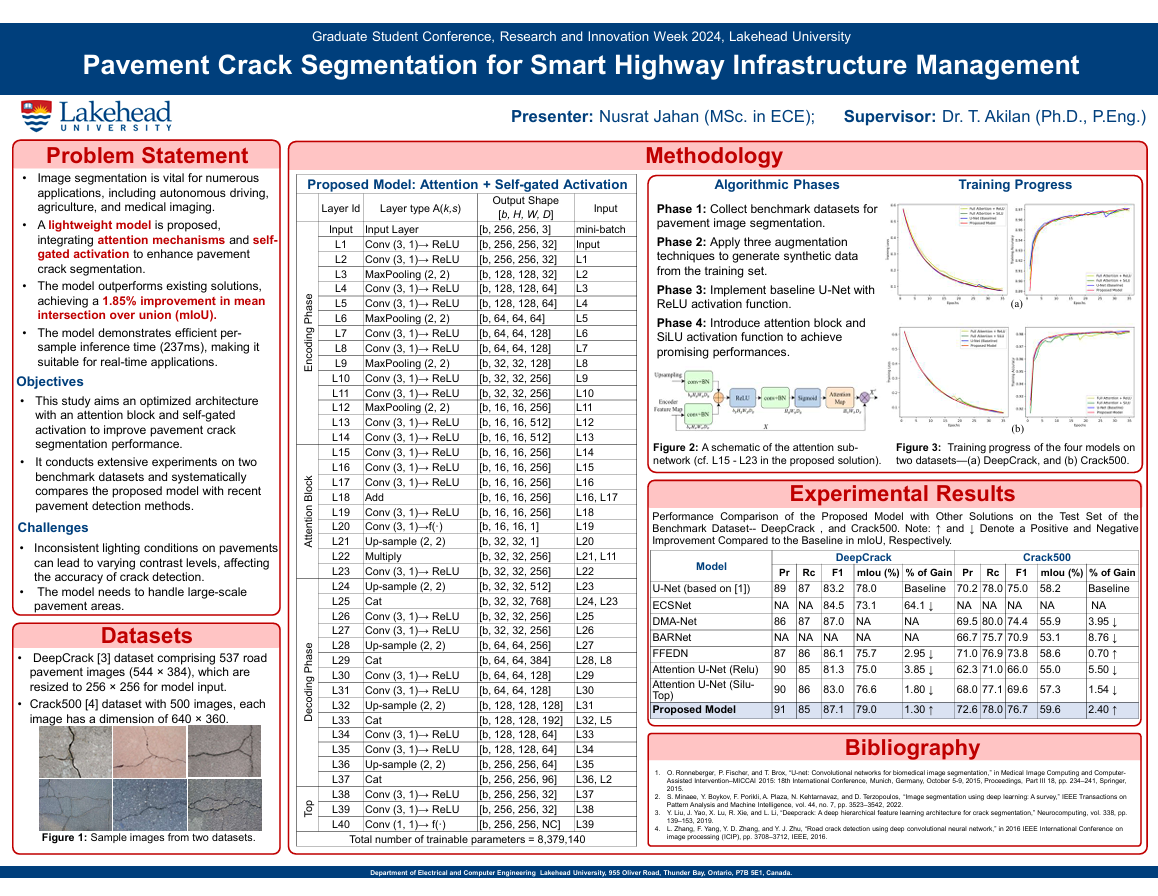 |
A brain tumor: an abnormal growth of tissue, which is found to be unchecked by the normal cell-cycle control mechanism. Early detection of brain tumors is imperative for enhancing patient care, tailoring treatment strategies, and saving lives. Manual segmentation requires a high level of expertise and is time-consuming. This study proposes a graph attention (GAT)-based model by exploiting multichannel (FLAIR, T1CE, T1, and T2) MRI modalities for brain tumor segmentation. [Link] |
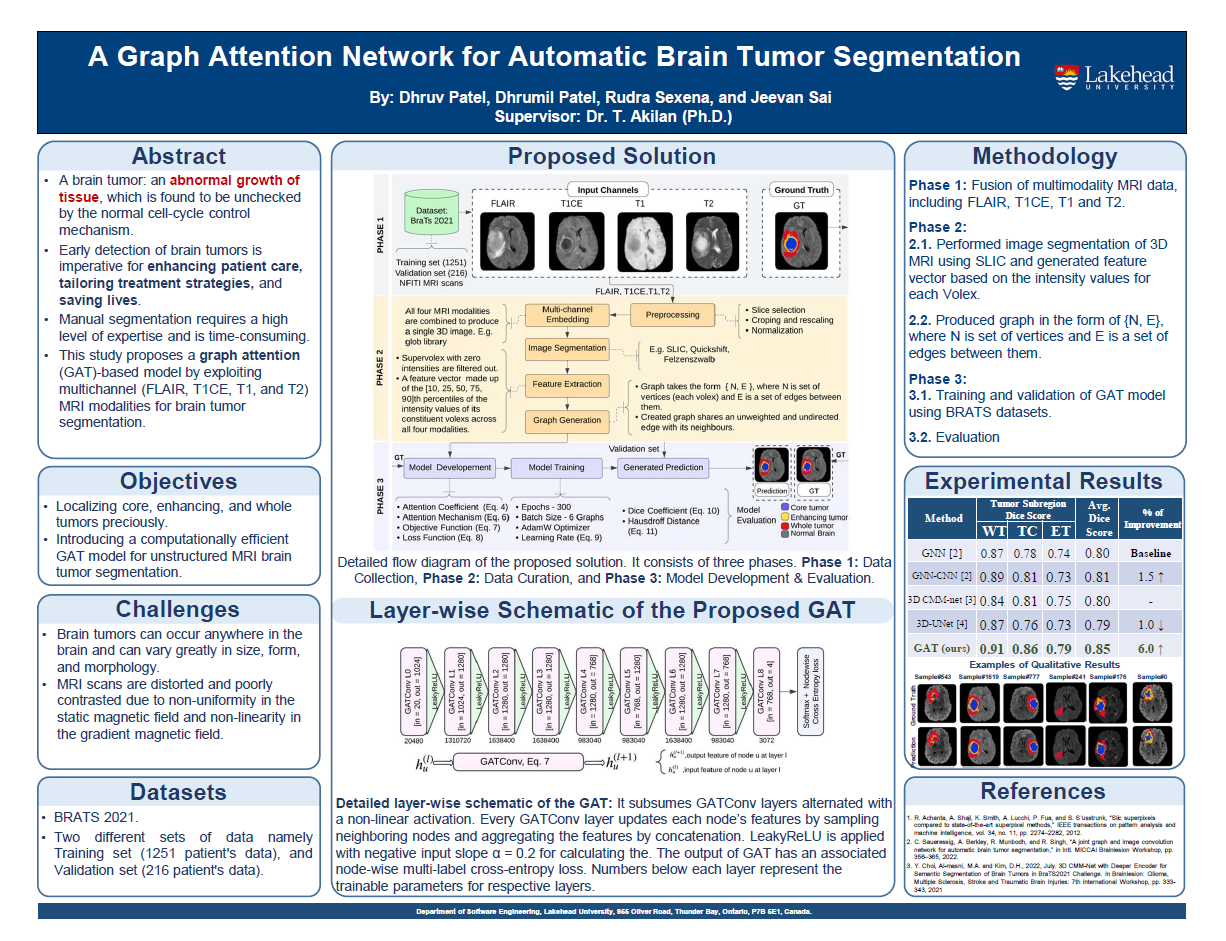 |
Brain tumor is a collection or a mass of abnormal cells in the brain. Early detection of Brain Tumors is quite essential for better treatment of patients. Manual diagnosis of MRI is known to be time consuming. Our research study is based on a newer approach to image segmentation of brain MRI using a multimodality learning technique with U-Net architecture. We have produced better dice coef. with different performance metrics through Fusion of inputs with the U-Net architecture model [Link] |
 |
The anomaly detection in surveillance videos is a critical problem for security and safety of the society. This work proposes a deep learning-based efficient solution that improves the detection accuracy significantly. |
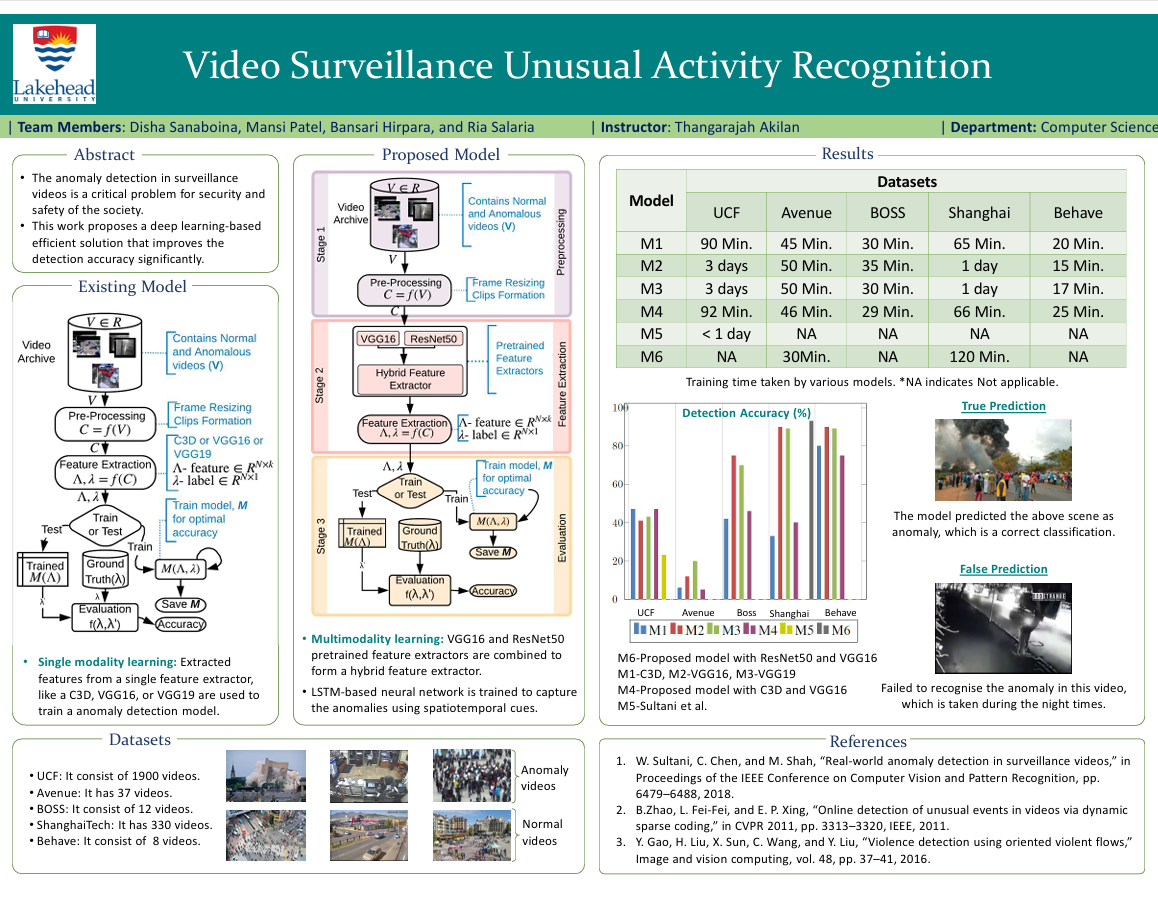 |
During the development and maintenance of a software, a bug is detected by the bug tracking system and a bug report is generated. Identical problem: There can be already existing bug reports, which were reported to the developer earlier, but the same problem can be reported over and over. It causes waste of development time solving a solved bug. So, it is extremely important to detect the duplicate bug reports. The proposed solution predicts the overwhelming of incoming bug reports as duplicates entries or not using LDA-based clustering and ML-based classification in a time efficient manner. [Link] |
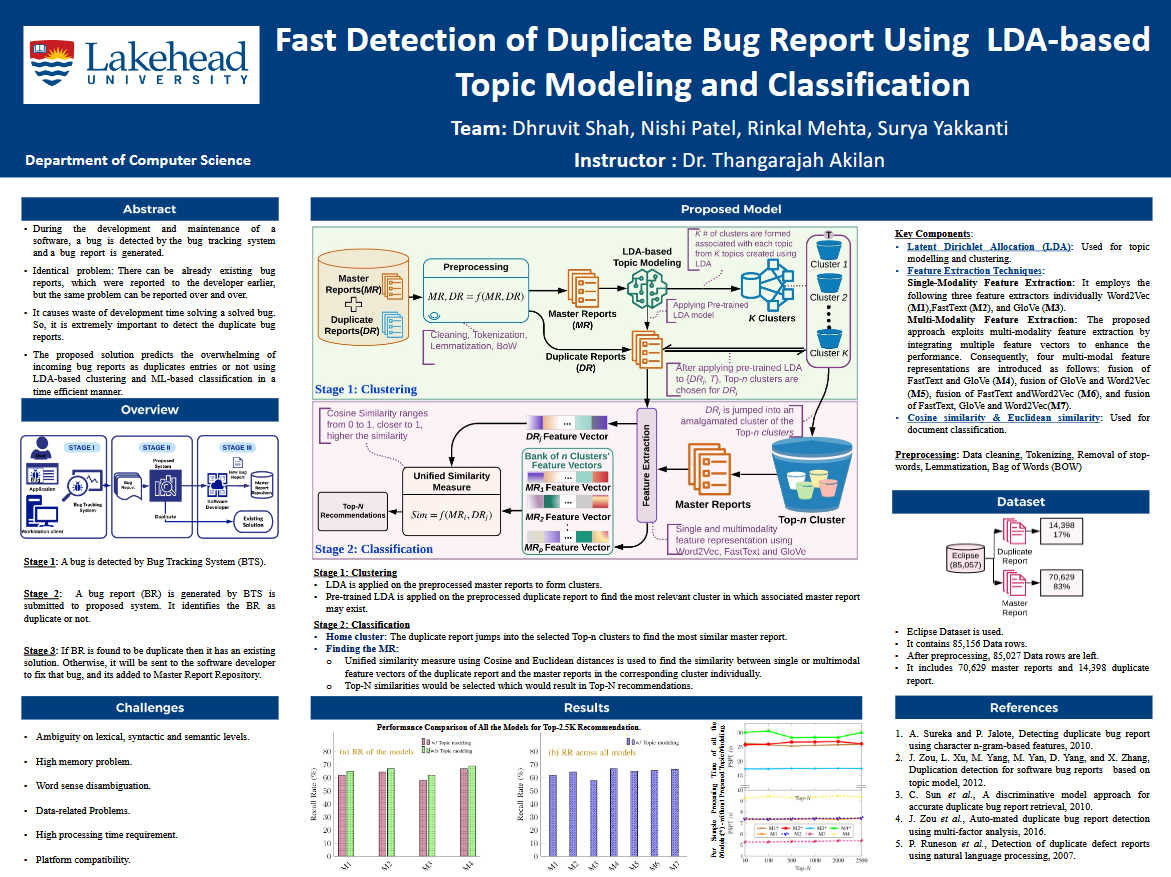 |